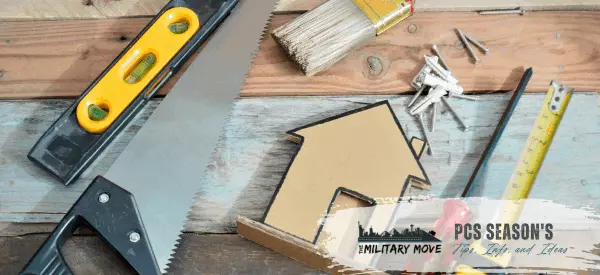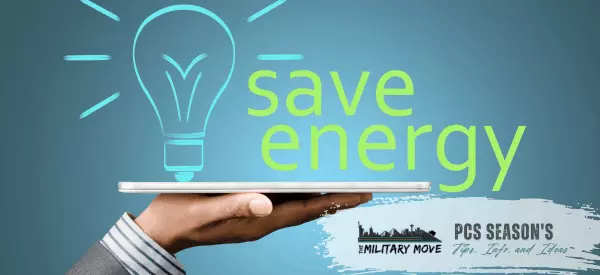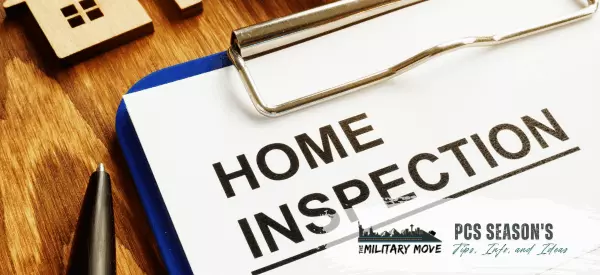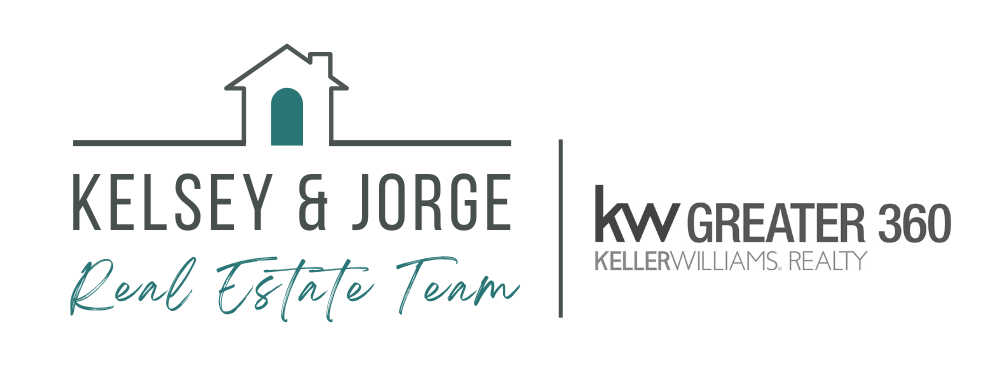
What Expenses to Expect When Purchasing your Home or Condo
When purchasing a home or condo, there are several upfront and ongoing expenses to consider beyond the purchase price. Here’s a breakdown of the typical costs you can expect: Down Payment Typical Cost: The typical cost for down payment can range from 3% – 20% of the purchase price. However, many programs such as conventional and FHA can do on average 3-5% down. The larger your down payment, the lower your mortgage and monthly payments. Depending on the loan type (conventional, FHA, VA), the required down payment can vary. One of the many perks of the VA though, 0% down required. You can choose to pay a down payment, but you are not required to do so. Mortgage Costs Mortgage costs can vary from lender to lender. It is important when you are shopping lenders to have them provide loan proposals on the same day (when rates would be similar). It’s also important to ask them to provide you their “par” rate. The following items will affect the costs of the mortgage itself. 1) Loan Origination Fees: Often lenders will charge an origination fee, usually 0.5% – 1% of the loan amount. This is the fee charged by the lender for processing the loan. However, in some circumstances, the lender will charge a flat fee. This is more highly desired at higher price points as it is more affordable. 2) Discount Points: Discount points are what make the interest rate lower (and not always a beneficial option). Every lender has a “par” rate that is free to lend on. To get a lower interest rate, one has to pay discount points to lower it. There is a maximum of how many points you can typically pay for, and it can get quite expensive. 3) Private Mortgage Insurance (PMI): If your down payment is less than 20%, you may be required to pay PMI for some loan programs. This cost can be 0.5% – 1% of the loan annually. This is what appeals to those that want to pay a larger down payment – not having to pay this fee. **VA loan holders do not pay this as a benefit to their loan.** Closing Costs 1) Typical Cost: 2% – 5% of the purchase price. This can include fees for title insurance, appraisal, home inspection, flood certification, credit report, attorneys (if necessary), and escrow services. Often, buyers negotiate with sellers to cover a portion of the closing costs. 2) Property Taxes: The cost varies based on location, typically 0.5% – 2.5% of the property value annually. Property taxes are often collected in escrow as part of your monthly mortgage payment. 3) Homeowners Insurance: Annual costs typically ranges from $500 to $2,000 depending on the size, location, and value of the home. This covers the structure and contents of your home against damage or loss. Some areas also require additional insurance like flood or earthquake coverage, which is separate than your average homeowner’s policy. Check FEMA for additional coverages. 4) Realtor Fees: In many instances a seller may choose to pay for the buyer’s agent to assist the buyer with this cost. However, in other circumstances a seller may choose to forgo this credit and have the buyer pay it. This is a negotiable item between you and your agent an d can vary. Please be reminded that realtors do not get paid until they successfully close with you on that home. *As a side note, all of our agents in our network are well-versed in VA loans and work hard to negotiate this cost to be paid by seller. Additional Fees Homeowners Association (HOA) Fees: The monthly, quarterly, or annual cost can range from $100 – $1,000+, depending on the community. Condos and some housing developments charge HOA fees for services such as maintenance of common areas, amenities, and security. Others may include the costs of exterior maintenance. Home Inspection: The cost will range significantly from place to place. In western Washington, a typicaly home inspection can cost from $450-$600. If you add additional items that are not typically covered under the scope of a home inspection, that will increase the costs. These could include sewer scopes, mold testing, moisture detection, lead-based testing, radon testing, etc. It’s highly recommended to get a home inspection to identify any potential issues before finalizing the purchase. It is also important to have the same inspector follow-up after repairs during your final walkthrough to ensure they were done correctly. Appraisal Fee: The cost will also range depending on the state, property type, and loan type. In Washington, an appraisal costs between $800-$1,100. A VA loan cannot be rushed, but conventional loans can which can cost additional fees. The lender requires an appraisal to ensure the home’s value supports the loan amount. Title Insurance: This cost that ranges from $500 – $3,000 may range on set fees or a tiered fee based on purchase price. This protects you and the lender from potential title disputes or issues related to property ownership. Utilities Setup and Transfer Fees: These costs may range from $100 – $500. You may have to pay setup or transfer fees for electricity, water, gas, internet, and other utilities when you move in. Furniture & Appliances: Did the home come with a refrigerator or washer/dryer? You may need to purchase those. These will vary widely based on needs. If this is your first home or condo, you may need to purchase furniture and appliances, which can add significantly to initial expenses. If they are in the home, try and negotiate these into the price. Maintenance and Repairs: The overlooked cost that most forget. The annual cost can be 1% – 3% of the home’s value. Homes require ongoing upkeep for things like lawn care, HVAC servicing, and potential repairs like roofing or plumbing. Moving Expenses: Having your buddies help you move (or the government if you are on orders) can be really cost efficient. However, once you hit your mid-30’s, no one wants to move heavy furniture for beer and pizza. The cost averages $1,000 – $5,000 depending on the distance, volume of belongings, and whether you hire professional movers. Understanding these expenses helps avoid surprises and ensures you’re financially prepared to handle all aspects of homeownership. Proper budgeting and planning can make the home-buying process smoother and more manageable. If you know someone looking to move near a military base – please send them our website below where we provide loads of base information. Click here to access our PCS Map Our military map has lots of resources for every military base within the United States including schools, base housing, colleges, Facebook groups, and connections to local real estate agents that are military affiliated and provide OUR credit
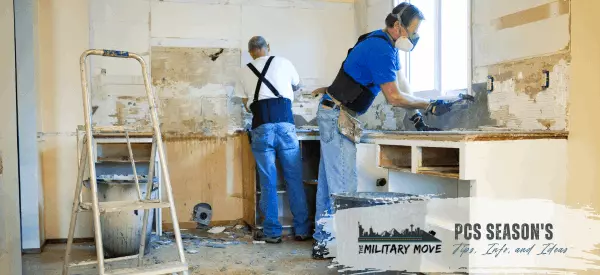
Home Improvements that will Increase the Value of your Property
Making strategic home improvements can indeed increase the value of your property. Here are some key improvements known to have a positive impact: 1. Kitchen Renovation: Updating the kitchen tends to have a high return on investment. This can include modernizing cabinets, countertops, appliances, and fixtures. Adding energy-efficient appliances and improving the layout for better functionality also adds value. 2. Bathroom Remodeling: Renovating bathrooms, particularly the master bathroom, can significantly boost property value. Upgrades might include replacing old fixtures, installing a new vanity, updating tile work, and improving lighting and ventilation. 3. Adding a Deck or Patio: Outdoor living spaces are highly desirable. Adding a deck or patio that complements the home’s architecture and landscaping can increase usable square footage and appeal to potential buyers. 4. Energy Efficiency Improvements: Enhancing energy efficiency not only reduces utility bills but also increases property value. Consider upgrading windows to energy-efficient models, adding insulation, installing a new HVAC system, or upgrading to solar panels. 5. Curb Appeal Enhancements: First impressions matter. Enhancing curb appeal can attract buyers and increase property value. This might include landscaping improvements, a new front door, exterior painting, or replacing old siding. 6. Finished Basement or Attic: Converting an unfinished basement or attic into usable living space can add square footage without expanding the footprint of the home. This can include adding bedrooms, a home office, or a recreational area. 7. Smart Home Technology: Integrating smart home features such as programmable thermostats, security systems, lighting, and appliances can make a home more attractive to modern buyers who value convenience and energy efficiency. 8. Flooring Upgrades: Installing new flooring, especially in high-traffic areas or where the current flooring is outdated, can significantly enhance the appeal and value of a home. Popular choices include hardwood, laminate, and tile flooring. 9. Upgraded Lighting: Improved lighting can transform the look and feel of a home. Consider adding recessed lighting, pendant lights, or energy-efficient LED fixtures to enhance both aesthetics and functionality. 10. Painting: A fresh coat of paint can do wonders for a home’s interior and exterior. Neutral colors appeal to a broader range of buyers and can make rooms feel larger and more inviting. When planning home improvements to increase property value, it’s essential to consider the preferences of potential buyers in your local market. Prioritize projects that align with current trends and offer a good return on investment. Additionally, ensure any improvements comply with local building codes and obtain necessary permits to avoid complications when selling your home. If you know someone looking to move near a military base – please send them our website below where we provide loads of base information. Click here to access our PCS Map Our military map has lots of resources for every military base within the United States including schools, base housing, colleges, Facebook groups, and connections to local real estate agents that are military affiliated and provide OUR credit

How Can I Transport My Car During a Move?
When you are about to undergo a cross-country or OCONUS move, one of the many things to consider is – how do I get my car to my destination? Maybe you have more than one and you cannot drive both. Transporting your car during a move can be done through various methods, and the choice often depends on your budget, timeline, and personal preferences. Here are some common ways to transport your car. Driving the Car Yourself: If the distance is reasonable and you have the time, consider driving your car to the new location. This option allows you to have control over your vehicle and belongings. Hiring Professional Auto Transport Services: Auto transport companies specialize in moving vehicles such as 4 Corners Transport Services, Montway, or Nexus. They broker out services with other carriers.They offer two main options: Open-Air Transport: Your car is loaded onto an open trailer. This is a cost-effective option but leaves your car exposed to the elements. Enclosed Transport: Your car is placed in an enclosed trailer, providing protection from weather and road debris. This is more expensive but offers added security. DIY Trailer Rental: You can rent a car trailer or tow dolly to tow your car behind a moving truck. This method is suitable for shorter distances, and you may need to ensure your vehicle is towable. Drive-Away Services: Some companies offer a drive-away service where a professional driver will drive your car to the destination. This can be more expensive than other options but may be more convenient. Shipping Container: If you are moving internationally, you can transport your car in a shipping container along with your household goods. Ensure you comply with customs regulations and coordinate with a shipping company. Here are some general tips to consider: Plan in Advance: Schedule the transportation well in advance to secure availability and better rates. Check Insurance: Verify the insurance coverage provided by the auto transport company. You may also want to check if your personal auto insurance covers transportation. Prepare Your Vehicle: Clean your car and take note of any existing damages. Consider removing personal items, and ensure your car is in good working condition. Get Quotes: Obtain quotes from multiple auto transport companies to compare prices and services. Read Reviews: Research and read reviews of the auto transport companies to ensure they have a good reputation. Remember to consider your specific needs and preferences when choosing the method for transporting your car during a move. If you know someone looking to move near a military base – please send them our website below where we provide loads of base information. Click here to access our PCS Map Our military map has lots of resources for every military base within the United States including schools, base housing, colleges, Facebook groups, and connections to local real estate agents that are military affiliated and provide OUR credit
Categories
Recent Posts
